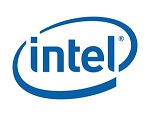Intel's Virtual Cable Service Won't Blow Up the TV Bundle
One of the biggest CE developments of the year that the TV industry will be watching closely won’t be coming out at the 2013 International CES.
Intel does indeed want to become your “virtual cable TV operator” in the cloud, as has been reported by several publications, including the Wall Street Journal, which first broke the story last year.
An Intel source confirmed the broad strokes of the strategy -- that the company is assembling a multichannel TV and network DVR service, along with a set-top box, designed to compete directly with cable, satellite and telco TV. “Yes, we will participate in this segment this year,” the source said.

Intel doesn’t want to be a cheap, “TV lite” provider: It wants to offer a full-bore pay TV lineup with both broadcast and cable networks, and will compete on features not on price, according to a programming executive briefed on Intel’s plans. Intel’s MVPD service will launch on a market-by-market basis to include local TV stations; the company is seeking retrans deals here, unlike Aereo’s legally risky gambit of repackaging over-the-air TV without paying broadcasters (and over which Aereo is being sued for copyright infringement).
What does Intel think is its secret sauce? The prototype service’s search and navigation features are “more intuitive than any other service I’ve seen,” the programming exec said, adding that Intel is incorporating facial recognition and gesture and voice controls, to provide a TV service that provides a personalized experience more like a smartphone or tablet.
Officially, Intel declined to say anything on the record about its virtual MVPD plans.
The billion-dollar question, of course, is whether Intel can cut the necessary multiscreen, IP content-licensing deals with cable networks -- which are understandably wary about upsetting their current distributors -- to put together a compelling service. Intel has already held discussions with major media companies about the service, including Viacom and A+E Networks, according to two sources.
The smarter way to stay on top of the multichannel video marketplace. Sign up below.
So far Intel has at least one agreement under its belt, according to the Journal, but the company has been stymied on this front; it originally wanted to come out with a virtual MVPD service last year but is now looking at a mid-2013 launch.
What Intel is not trying to do is introduce an a la carte, pay-per-channel model for consumers, the programming executive said. “They may be bundling in different packages but they are not going a la carte,” this source said.
Rather, what Intel is trying to do is avoid buying the wholesale bundle of networks -- it wants only must-have channels instead of the whole suite media companies typically force on pay TV operators. This has been a source of contention for years, as Multichannel News readers know. The tricky part is incumbents often have “most-favored nation” clauses in their carriage deals, meaning that if a programmer offers to license Intel only individual networks they must extend the same terms to MSOs as well. (The Department of Justice is said to be looking into whether most-favored nation provisions violate antitrust laws, as part of a broader inquiry.)
Initially, Intel is seeking network DVR rights for a three-day “lookback” service (within the Nielsen C3 window), but eventually would like replay rights for longer periods, according to the programming exec.
Intel faces other big challenges besides networks’ concerns about upsetting the traditional pay TV apple cart. For one thing, MSOs and telcos have marketing leverage with the triple-play bundle, and they price standalone broadband (required to receive an over-the-top TV service) less attractively.
But if the price and the terms are right, Intel will get its deals done. “We’re always concerned about [angering] our traditional partners,” the programming executive told me. “But at the same time, we welcome new entrants.”
Follow me on Twitter: @xpangler
